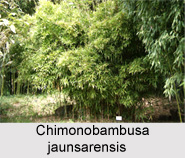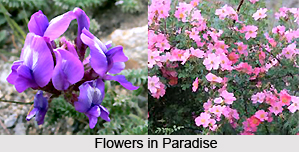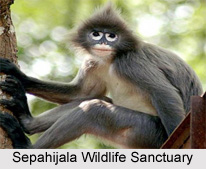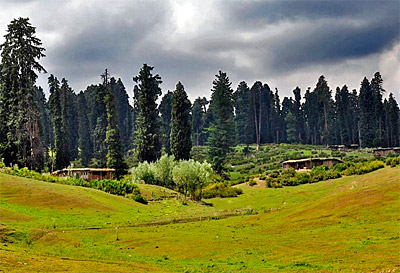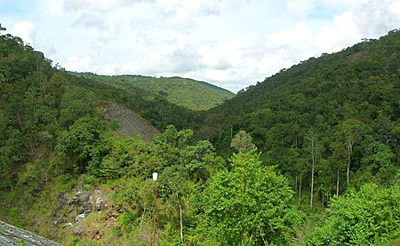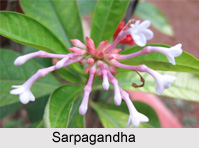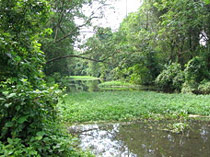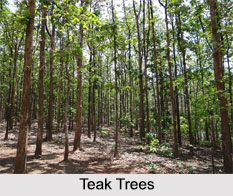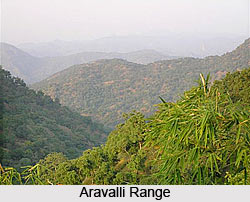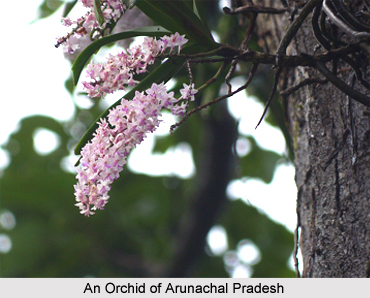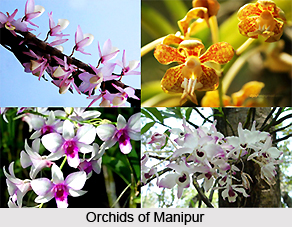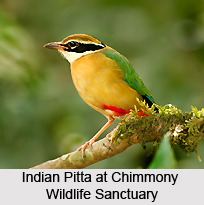 Chimmony Wildlife Sanctuary is one of the popular sanctuaries of Kerala and is situated in the Mukundapuram Taluk of Thrissur District. The sanctuary is located in the west of Parambikulam Wildlife Sanctuary, and connects the Peechi-Vazhani Wildlife Sanctuary. Established in the year 1984, the sanctuary stretches across the western slopes of the Nelliyampathi hills. The headquarters of the sanctuary is at Echippara. It is about 28 kms away from the Amballoor village in the north. Amballoor is 12kms away from Thrissur town in the southern direction. Chimmony Wildlife Sanctuary covers an area of 85.067sq.km. The Altitude ranges from 40 to 1110m and the highest peak located here is the Punda peak which is almost 1116m. The region has a soothing climate. The temperature varies from 15 ° C to 36 ° C. March and April is the hottest months here. The region here receives an average rainfall of about 2980mm.
Chimmony Wildlife Sanctuary is one of the popular sanctuaries of Kerala and is situated in the Mukundapuram Taluk of Thrissur District. The sanctuary is located in the west of Parambikulam Wildlife Sanctuary, and connects the Peechi-Vazhani Wildlife Sanctuary. Established in the year 1984, the sanctuary stretches across the western slopes of the Nelliyampathi hills. The headquarters of the sanctuary is at Echippara. It is about 28 kms away from the Amballoor village in the north. Amballoor is 12kms away from Thrissur town in the southern direction. Chimmony Wildlife Sanctuary covers an area of 85.067sq.km. The Altitude ranges from 40 to 1110m and the highest peak located here is the Punda peak which is almost 1116m. The region has a soothing climate. The temperature varies from 15 ° C to 36 ° C. March and April is the hottest months here. The region here receives an average rainfall of about 2980mm.
Chimmony Wildlife Sanctuary is regarded as one of the world`s 25 bio-diversity hot-spots. The sanctuary is home to innumerable varieties of species of animals and plants. There are almost 39 species of mammals, 160 species of birds, 25 species of reptiles, 14 species of amphibians, 31 species of fishes and almost 100 varieties of butterflies.
Flora and Fauna of Chimmony Wildlife Sanctuary
Chimmony Wildlife Sanctuary houses a variety of wild animals and trees. The sanctuary is covered with tropical, evergreen, semi-evergreen and moist deciduous forests. Some of the most rare and endangered species of orchids can be seen here. The different types of flora found here are Strobilanthus, arrowroot, ferns, palaquim ellipticum (pali), mesua ferrea (nangue), cullenia exorillata (vediplavu), dipterocarpus indicus (kalpine), hopea parviflora (kambakam) and dysoxylum malabaricum (vellagil), aporosa lindleyana (vetti), canarium strictum (thelly), euodia roxburghiana (nasagam) and mallotus philippensis (karukutty), adina cordifolia (manjakadambu), bombax ceiba (elavu), cedrala toona (chandana vembu), syzygium cumini (njaval) and lagerstroemia lanceolata (venteak), alsophila spp, lasinthus versulosus, angioptera spp, gnetum ula, apodytes koddemei, diospysus nilgirica, antisroplie serratifolia, ruwolfia densiflora, hydrophylla erecta, departrium punceum. Habomaria rariflora, osmunda raogans are few of the orchids found here. The different types of animals found here are Tiger, leopard, sloth bear, dhole, nilgiri langur, bonnet macaque, elephant, gaur, sambar, spotted deer, wild boar, Asian elephant, wild dog, Malabar giant squirrel, and more. The sanctuary is also provides shelter to a variety of avian fauna like Darter, dabchick, Malabar grey hornbill, Sri Lankan frogmouth, Malabar whistling thrush, raquet tailed drongo, malabar trogon, ruby throated bulbul, crested serpent eagle, spot bellied forest owl, paradise flycatcher, Indian pitta, and more. The world`s largest moth "Atlas Moth" can also be found in the sanctuary.
